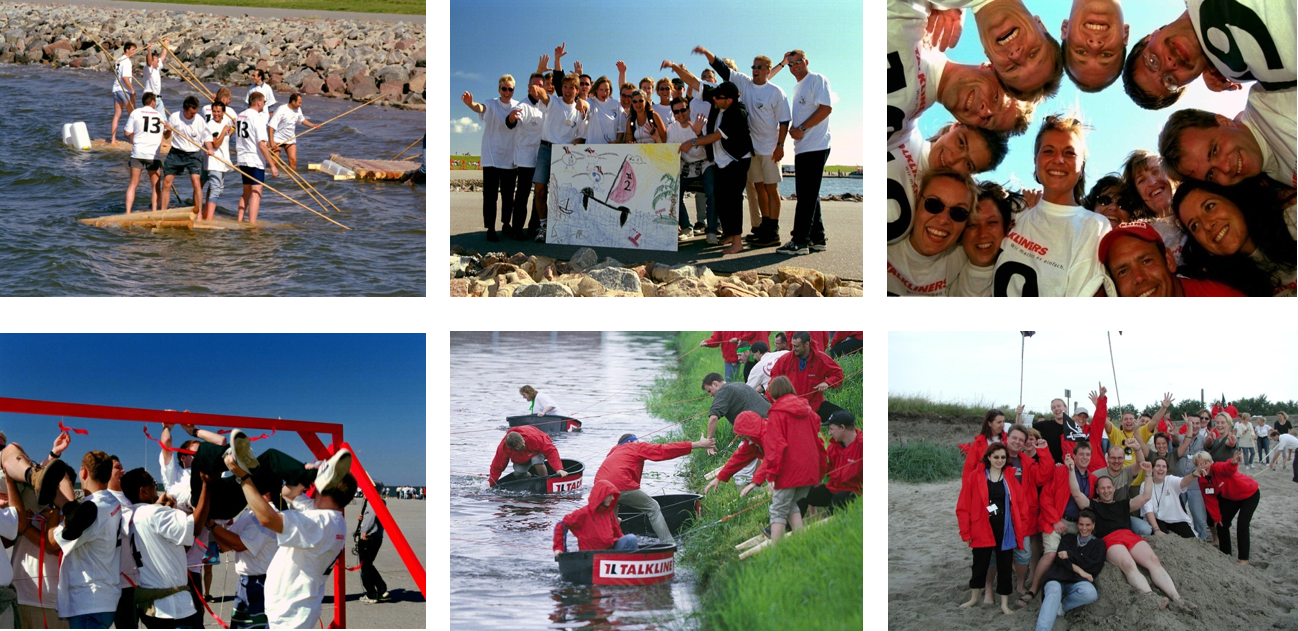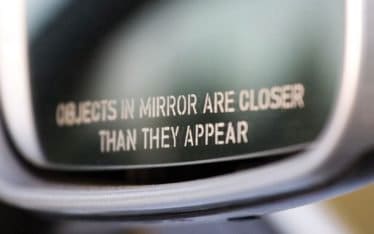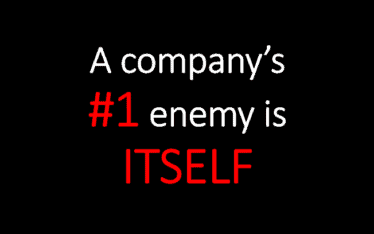Organizational culture an important part of change management
All change in organizations is challenging, but perhaps the most daunting is changing culture. There are at least two reasons for this:
- Culture is a soft concept – If there’s no concrete way of defining or measuring culture, then how can you change it?
- Culture represents collective norms and behaviors – It’s hard enough to change one person’s behavior — how can you change the behavior of an entire organization?
But if managers want to build high-performing organizations, they need to address culture change.
Organizational culture grows over time
People are comfortable with the current organizational culture. For people to consider culture change, usually a significant event must occur. An event that rocks their world – such as burning platform. So before you you get buy-in, people need to feel the problem. People aren’t going to consider anything until they are convinced there is a problem that truly needs to be addressed.
Even then, to recognize that the organizational culture is the culprit and to take steps to change it, is a tough journey. When people in an organization realize and recognize that their current organizational culture needs to transform to support the organization’s success and progress, change can occur.
Major steps involved in changing an organization’s culture
There are four major steps involved in changing an organization’s culture:
- Before an organization can change its culture, it must first understand the current culture, or the way things are now.
- Once you understand your current organizational culture, your organization must then decide where it wants to go, define its strategic direction, and decide what the organizational culture should look like to support success. What vision does the organization have for its future and how must the culture change to support the accomplishment of that vision? Your management team needs to answer questions such as:
- What are the most important values you would like to see represented in your organizational culture?
- Are these values compatible with your current organizational culture? Do they exist now? If not, why not?
- However, knowing what the desired organizational culture looks like is not enough. Organizations must create plans to ensure that the desired organizational culture becomes a reality.
- Finally, the individuals in the organization must decide to change their behavior to create the desired organizational culture. This is the hardest step in culture change
Important components in changing the culture of an organization
Other components important in changing the culture of an organization are:
- Create value and belief statements – use employee focus groups, by department, to put the mission, vision, and values into words that state their impact on each employee’s job
- Practice effective communication – keeping all employees informed about the organizational culture change process ensures commitment and success. Telling employees what is expected of them is critical for effective organizational culture change
- Review organizational structure – changing the physical structure of the company to align it with the desired organizational culture may be necessary
- Redesign your approach to rewards and recognition – you will likely need to change the reward system to encourage the behaviors vital to the desired organizational culture
- Review all work systems – employee promotions, pay practices, performance management and employee selection to make sure they are aligned with the desired culture
Changing the organizational culture requires time
Corporate culture is a hard thing to get right. It’s a moving target that means something different to everyone. It grows and evolves over time and is the result of action and reaction. It is the lingering effect of every interaction.
Short URL & title:
Corporate culture an important part of change management — http://www.torbenrick.eu/t/r/dpb
Share it:
If you enjoyed this article, please take 5 seconds to share it on your social network. Thanks!









Very interesting article Torben,
You are very right that, in order to be successful, a strategic initiative must take culture into account and, where adequate, drive a cultural shift.
In order to do so the following tools should be used; a clear description of the strategic intent, Vision and Mission statements, Values and how they translate into ways to do things, and, last but by far not least, the adequate management system (goal setting, skills and results recognition, and much more ..)
Culture is a key part of a company’ identity. It is the result of history and of myriads of events. Managing a cultural shift is a significant task that requires time, focus, and persistence. In that sense understanding culture and driving cultural shift when necessary is far more than change management, it is one of the most fundamental part of management.
I believe so much into this, that I have founded a management consultancy based on the concepts of Identity and Culture as the fundaments of Performance.
Over riding it all is communication. Too often an organization going through major changes keeps the ideas/movement toward the change confined to an Executive Committee. The rest of the employees are left to figure out it through hearsay and gossip.
Solution: Hold weekly meetings that have this agenda item:
What rumor did you hear this week? It gives the Executive Committee a change to kill rumors before they get out of hand. Uncertainly breeds lack of trust.
An understanding of an organizations culture is always the starting point of any project.
CULTURE BY DESIGN OR DEFAULT
Our view is that culture happens by DESIGN or by DEFAULT; Organizations are much better off when they take the time to think about culture and DESIGN the systems to drive the desired outcomes. It’s not that executives don’t ‘get’ this concept. It’s that they don’t spend the time to collectively think about culture in a structured way and then follow-up to ensure it happens.
Mission, Vision & Value statements are easy; Living them is hard. Designing supporting systems is very difficult and making changes stick is even more challenging.
I’m a big fan of designing the organization with explicit consideration to the desired culture. Nothing will make a cultural statement as strong as whom you hire, fire and promote.
We use a great tool called the ‘business diamond’ that we use to guide executive discussions on culture and link it to strategy.
I’m sure the solution of that problem begins quite earlier by suggested step 1 “it must first understand the current culture”
My experience is people have not the right guideline to understand what is part of the culture. I guess such analysis mostly start above basic culture issues and deal only with the second level, not with the ground-floor. But the ground floor is underlying all further above.
I’ll give you an example for such basics:
Management believes employees will work harder if they will paid for this incentively. Therefore Management has a culture to pay incentives and some employees run for it. A good culture could also be more efficient without a focus on incentives. But such a culture needs additional different components.
Do we understand really the current culture?
I do like what you have written here, because it begins the conversation of culture and culture change. I do not know if it is acceptable to converse as follows, but it gives me the easiest nominal manner in which to respond to your many points of interest. My responses are all preceded by the words “JS Note”-my initials; I wish we could retain the ability to bold, italicize, and change font color to ease the readers’ burden of understanding. In any event, here goes:
There are at least two reasons for this:
1. Culture is a soft concept – If there’s no concrete way of defining or measuring culture, then how can you change it? JS Note: How then do you define, grasp onto and CHANGE the defined elements? How do you make “hard” what is soft?
2. Culture represents collective norms and behaviors – It’s hard enough to change one person’s behavior — how can you change the behavior of an entire organization? JS Note: Bad analology—if it’s hard to change a single person’s behavior then how do you expect to change most employees? Second, if “Culture represents collective norms and behaviors”, then how do you change the norms and behaviors? Third, does culture represent norms and behaviors, or do norms and behaviors represent culture? If the latter, then the change effort is to be focused on the norms and behaviors, not on a soft concept labeled “culture”.
But if managers want to build high-performing organizations, they need to address culture change.
Organizational culture grows over time. JS Note: A truism. But it might also decline, break or fall apart. People are comfortable with the current organizational culture. JS Note: This is definitely NOT true. It ignores the players “levels” differences (i.e., labor vs management, supervisory or executive management). It also ignores that those in power positions (C-suite) have inordinately more ability to communicate and present what they want employees to do, often to the disadvantage of lower level employees. For people to consider culture change, usually a significant event must occur. An event that rocks their world – such as burning platform. So before you you get buy-in, people need to feel the problem. People aren’t going to consider anything until they are convinced there is a problem that truly needs to be addressed. I do agree with this—people need to recognize a problem exists before a solution can be formulated and implemented.
Even then, to recognize that the organizational culture is the culprit and to take steps to change it, is a tough journey. When people in an organization realize and recognize that their current organizational culture needs to transform to support the organization’s success and progress, change can occur.
There are four major steps involved in changing an organization’s culture:
1. Before an organization can change its culture, it must first understand the current culture, or the way things are now. JS Note: Back to critique #1, how then do you define, grasp onto and CHANGE the defined elements? How do you make “hard” what is soft?
2. Once you understand your current organizational culture, your organization must then decide where it wants to go, define its strategic direction, and decide what the organizational culture should look like to support success. What vision does the organization have for its future and how must the culture change to support the accomplishment of that vision? Your management team needs to answer questions such as:
o What are the most important values you would like to see represented in your organizational culture? JS Note: Nowhere have you said anything about values and culture—just norms and behaviors. What are we examining here to begin with?
o Are these values compatible with your current organizational culture? Do they exist now? If not, why not? JS Note: I do NOT know what this means. First, we haven’t had any understanding how VALUES are a component of culture, let alone how to assess current organizational culture. Can this be done with a survey? Or 3rd party observers of employee behaviors?
3. However, knowing what the desired organizational culture looks like is not enough. Organizations must create plans to ensure that the desired organizational culture becomes a reality. JS Note: Is the desired culture not subject to disconfirmation by significant others (i.e., competitors in the C-suite) or groups (i.e., a union or bad press relations with the community)
4. Finally, the individuals in the organization must decide to change their behavior to create the desired organizational culture. This is the hardest step in culture change. JS Note: I agree, because here you must design and emit new messages (proposed values, norms and behaviors), communicate them until the messages and values are accepted and internalized. This is the process of socialization to new employees and development of existing employees that is not easy to achieve without constant monitoring and measuring results—i.e., changed opinions and behaviors of employees.
Other components important in changing the culture of an organization are:
• Create value and belief statements – use employee focus groups, by department, to put the mission, vision, and values into words that state their impact on each employee’s job
• Practice effective communication – keeping all employees informed about the organizational culture change process ensures commitment and success. Telling employees what is expected of them is critical for effective organizational culture change
• Review organizational structure – changing the physical structure of the company to align it with the desired organizational culture may be necessary JS Note: One Tx truck company was one mistake I surveyed by taking a cultural desire of division managers to reorganize, and seeing the President going haywire over what he didn’t consider their prerogative to make recommendations about to him. Be careful doing this without prior permission of the President and/or CEO.
• Redesign your approach to rewards and recognition – you will likely need to change the reward system to encourage the behaviors vital to the desired organizational culture JS Note: This is entirely dependent on whether there is a clear connection between employee efforts and financial return. If targets (based on current ACTUAL performance at the base) are related to improved outcomes of behavior (due either to quantitative or qualitative outcomes), then attaching financial incentives willwork. This generally doesn’t involve staff headquarters white collar workers, but it can relate significantly to sales and production personnel.
• Review all work systems such as employee promotions, pay practices, performance management, and employee selection to make sure they are aligned with the desired culture JS Note: Wow, this is a tall order. First you need to know what the desired “culture” is, and then integrate/connect/correlate how “systems” (if they exist) in succession, selection, pay “are aligned”.
Changing the organizational culture requires time, commitment, planning and proper execution – but it can be done. High performance and success are not dependent on one simple factor or as a result of one or two things. The entire context you operate in greatly impacts your results.
“Culture is not just one aspect of the game, it is the game” – Lou Gerstner
JS Note: I would modify that to say, “culture is not just one aspect of the game, it is the name of the game”. For culture requires written and verbal codes of communication (words and language), itself premised upon the “naming” of all persons, places, things and the action words (or verbs) by which the code conveys action and activities to be changed.
Of course, all solutions are based on varying factors, including company size and organizational model. That said, I don’t think understanding your current culture is a necessary first step. I would agree that once you’ve decided on the culture you want to create, it is a good idea to take inventory, but you’re wasting your time studying and analyzing something you want to throw away.
“You should never let your desired destination be influenced by your current destination.”
In order to give your organization the biggest opportunity for change, the new culture has to be defined from an authentic extension of the beliefs and values of the leadership. It can’t be a “flavor of the month” activity.
If the culture is authentic, leadership creates culture through modeling the behaviors and values that are expected from everyone. it’s not parlor tricks and management tactics.
When executed properly, culture should be a natural reflection of your brand and intrinsic to your recruiting model. When successful, you’re “attracting” people rather than “changing” people.